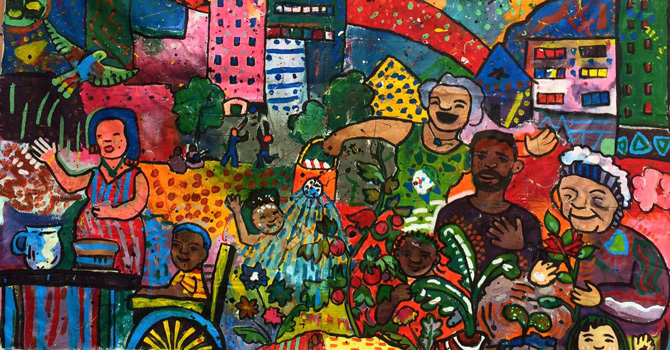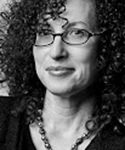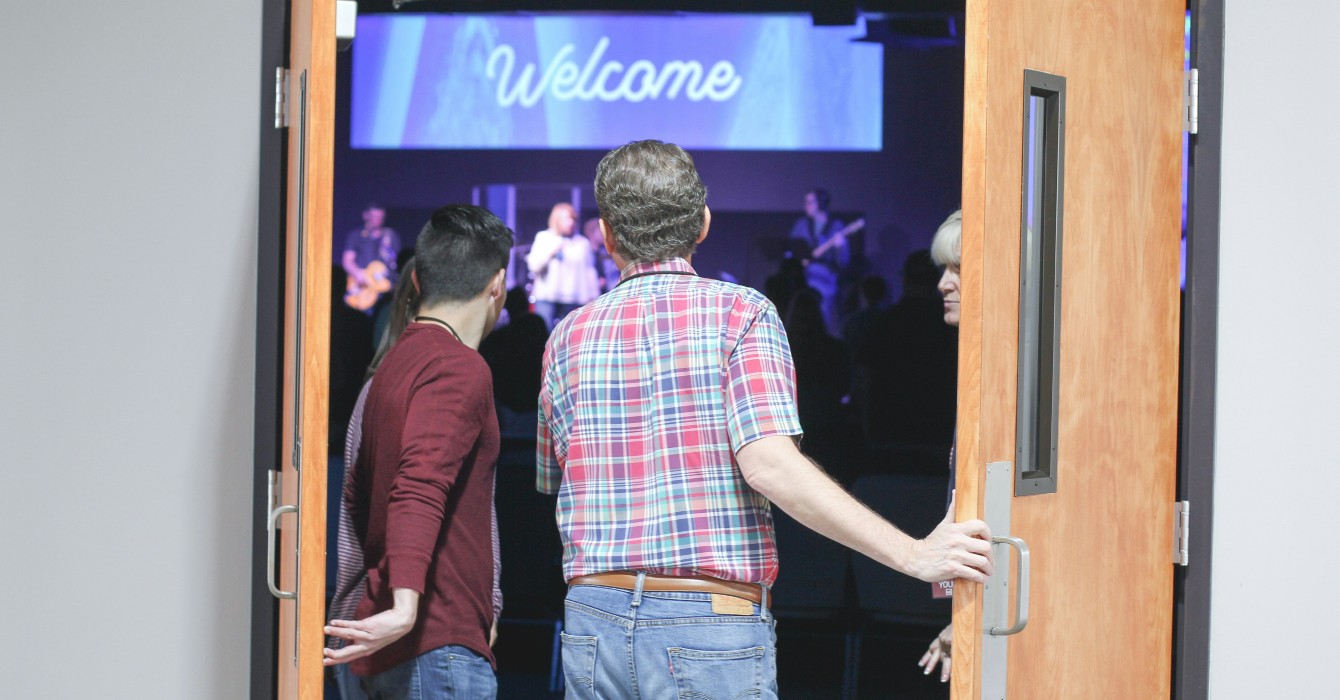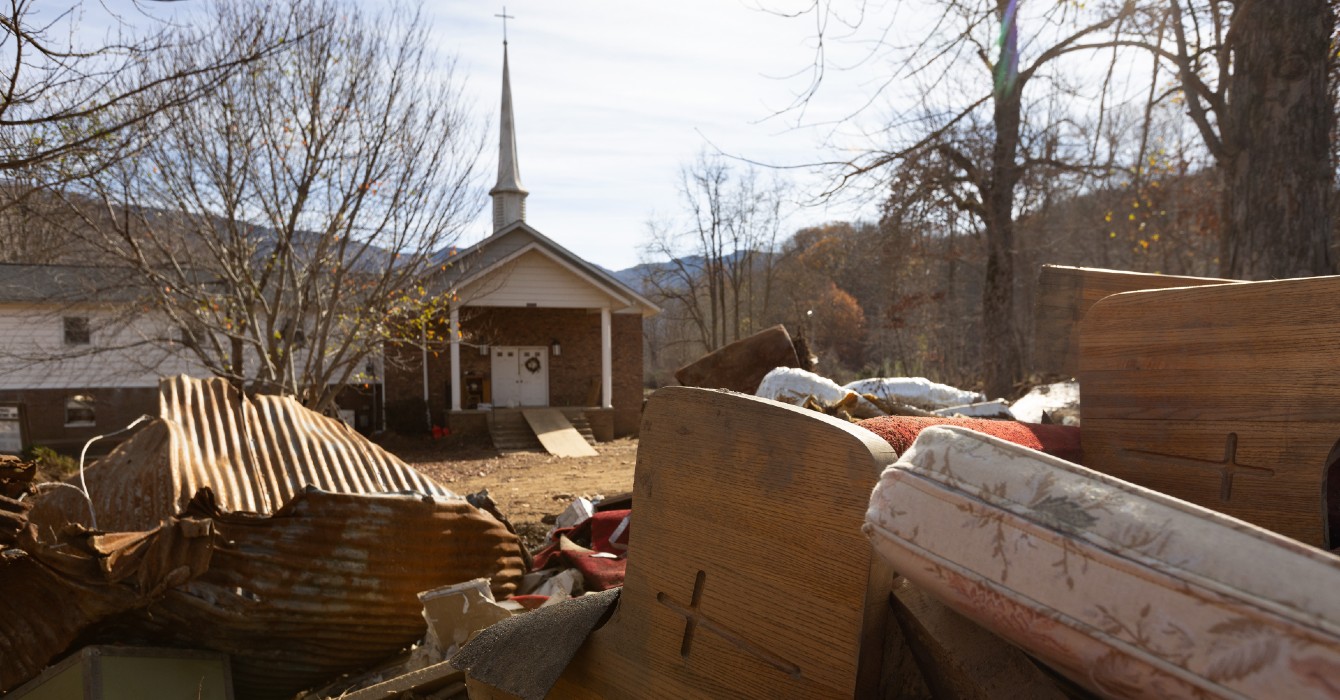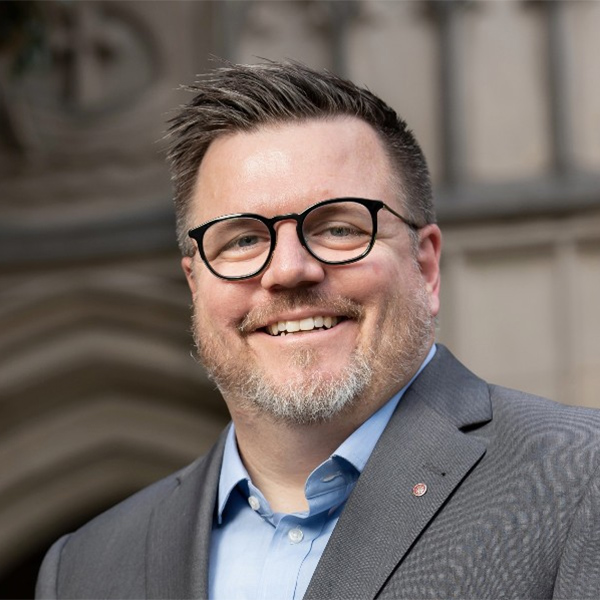Last summer, kids gathered at Redeemer Lutheran Church to paint murals in the Harrison neighborhood of North Minneapolis. Draped in too-big shirts to protect their clothes, they grabbed brushes from buckets and painted bright pictures on plywood.
The murals answered the question, “What would you like to see grow in your neighborhood?” One mural featured a hippo; one had a bush sprouting both strawberries and tortilla chips; one pictured the earth with a big hairdo.
The mural-painting project gave the children of the neighborhood a way to express themselves and build relationships with each other and adults from the church. And the art they created was for public display, helping foster a sense of pride in the neighborhood.
The murals project is an example of how arts ministry can be a powerful tool in building community -- both inside a congregation and between the church and its neighbors.
Projects that invite participation by everyone in the congregation can draw people together across generations, races and viewpoints. They can make it easier to have difficult conversations. And they can be a bridge to the church for people who may not normally be drawn to attend.
The mural project is just one of the ways Redeemer has embedded art in church life and ministry in the multiethnic Harrison neighborhood in North Minneapolis.

Katherine Parent is the artist-in-residence at Redeemer. She got that title when the pastor asked her what she wanted to do in her new role as intern.
“I told him I had always wanted to lead groups of people in making art,” she said. “I was empowered by the church to work with the pastor and other staff to develop creative art projects that express our community values and bring joy and color into our space.”
One of her projects focused on honoring the elders at Redeemer -- older people in the congregation who had been at the church the longest. Elders sat for their portraits, which were printed in the church newsletter, along with a short write-up of each person’s story.
The effect was to bring visibility to important but often hidden church members and to affirm their place in the legacy of the congregation. The elders felt valued and heard; one woman printed out the newsletter and posted copies at her nursing home.

Art has been incorporated into Redeemer’s children’s programs as well. In one project, Sunday school children made batik hangings for the sanctuary from Bible stories.
The children were told they could make Jesus and other characters in the stories whatever color they wanted.
The resulting hangings presented a multiethnic vision of the church, both a reflection and an aspiration of the Redeemer congregation.
Art has also helped further an ongoing conversation on racism at Redeemer, which is committed to pursuing racial justice in its multiethnic congregation and community.
“Art is a powerful tool for expressing painful realities in healing ways in community,” Parent said. “Through art, I’ve seen people be pulled into conversations they wouldn’t normally have in the church.”
For example, spoken-word poets have performed in the church about the urgency to end mass incarceration of African-Americans. In the local observance of the anniversary of the Selma march, church members carried banners made at Redeemer. These pieces both celebrated the successes of the civil rights movement and underlined persisting racial inequities.
Parent herself painted a series of works on police brutality. Each painting has words and an image; one shows a dead body under a police barricade with suburban-style houses in the background and the phrase “America Still Bears Strange Fruit.”
“I have been empowered to use my own authentic voice, and some of these paintings are quite angry. But the church was still willing to display the work,” she said.
Churches can use the arts to attract people to a congregation. The Rev. Dan Goddard, a pastor and ceramics artist, has spearheaded new efforts in South Minneapolis to help his church make connections in a neighborhood that is full of artists and art lovers.
Goddard sees the Creator’s Heart ministry at his congregation, First Free Methodist Church, as a unique way to build a bridge to people outside the church with music and visual arts.
“What drove me to use arts in ministry is looking at dying churches and wondering what could be done to bring these churches alive again,” he said. “I think the church has lost its ability to communicate with people of different beliefs. Art is a language that can build that bridge. It has something ‘soul-ish’ about it -- it connects with people in a deep way.”
Creator’s Heart offers lessons in voice, keyboard, bass guitar and drums. An open Wednesday night jam session is attracting a growing group of musicians.
Goddard also offers ceramics classes at the church twice a week, sometimes holding sessions outdoors.
“Setting up my potter’s wheel outside really grabs the attention of neighbors,” Goddard said. “One time a neighbor drove by, stepped on his brakes and backed up. He got out and said, ‘What are you doing!?’”
The goal is to offer more structured arts programming as time goes on, perhaps incorporating a separate nonprofit associated with the church to house the arts programs.
Goddard also got his church involved in neighborhood arts activities. Through his connection with the local league of artists, the church is now a stop on a neighborhood “arts crawl,” serving as a venue for artists from the congregation to display and sell their work.
A common concern for congregations wishing to develop arts ministries is the perception that the arts may challenge traditional ways of “doing church,” Goddard said.
A good way to start, he said, is to focus on the historical presence of arts in the church. Teaching your congregation about the presence of the arts in the Bible (music, poetry, the beautiful design of the temple) and in more modern church settings can make the arts seem more relevant in your own church context and build support for new kinds of programming, he said.
Here are more suggestions for starting a community arts ministry:
- Set outcomes. What do you hope your church will get out of arts programming? What do you see as the impact for the local community?
- Pay artists, if possible. You’ll need artists to help you design and implement programs. Pay them to demonstrate that you value their skills and to contribute to their ongoing creation of work.
- Be flexible. Your arts project may need to flex in its focus, media or timeline to accommodate the needs of your audience. Being flexible when working with children is particularly important.
- Get buy-in. The most successful church-sponsored community arts programs have buy-in from the congregation. Address questions such as whether the church will provide funding, volunteers and space. Can the completed art projects be displayed in the church?

